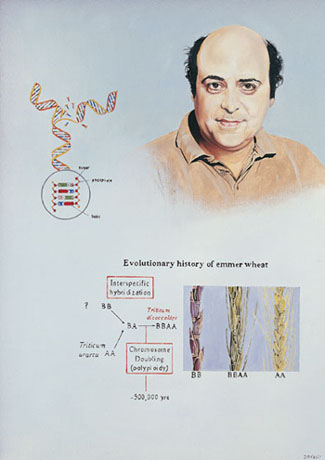Are you a journalist? Please sign up here for our press releases
Subscribe to our monthly newsletter:

Back in Jurassic days, not long after the appearance of early mammals, the first flowering plants emerged. Since then only 4,000 species of the former have evolved, as opposed to some 300,000 of the latter. “Unlike mammals, plants are tolerant of genetic change,” says Prof. Avi Levy of the Plant Sciences Department, who is interested in how new
species evolve.
Levy found that plants are quite sloppy at repairing damaged DNA, leading to an accumulation of mutations that can bring about the formation of new species. Another feature accelerating the creation of plant species is their ability to cross-hybridize with related species. Though mammals can occasionally cross-hybridize (horses and donkeys, for instance, give birth to mules), the product is nearly always sterile, a dead-end in terms of evolution. Plant hybrids, however, can become fertile by doubling the sets of chromosomes from each parent – a phenomenon called genome doubling.
Studying genome doubling through plant models may provide clues to early events in human evolution. Recent analysis of the full sequence of the human genome suggests that a few hundred million years ago genome doubling may have been one of the quantum leaps that increased genetic complexity and gave rise to vertebrates, including mammals. Levy, who is researching genomic doubling in plants, says, “Doubling of genetic information causes 'genomic shock.' Under such conditions, certain dormant parts of the genome wake up and other parts are shut down.” He recently found that the waking up of these dormant parts, known as “jumping genes,” can interfere with the activity of neighboring genes, reversing their function